Kingdom Animalia Family Viverridae Scientific name Viverricula indica Higher classification Viverricula | Order Carnivora Subfamily Viverrinae Phylum Chordata Rank Species | |
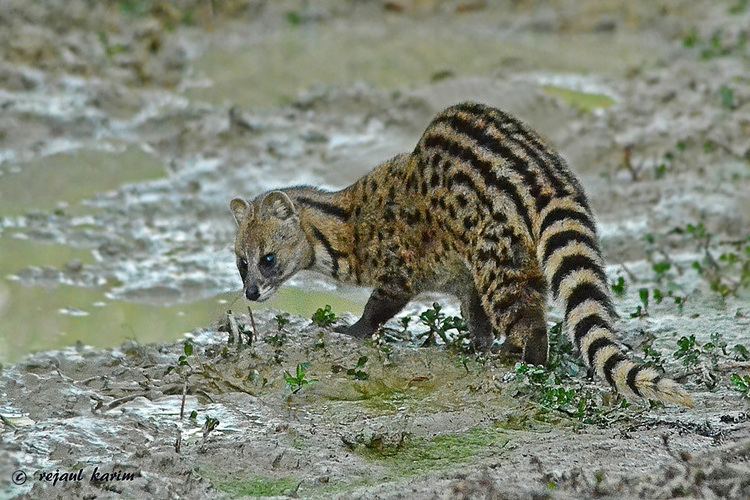 | ||
Genus ViverriculaHodgson, 1838 Similar Large Indian civet, Asian palm civet, Paradoxurus | ||
The small Indian civet (Viverricula indica) is a civet native to South and Southeast Asia. It is listed as Least Concern on the IUCN Red List because of its widespread distribution, widespread habitat use and healthy populations living in agricultural and secondary landscapes of many range states.
Contents
- The small indian civet viverricula indica
- Taxonomy and evolution
- Subspecies
- Characteristics
- Distribution and habitat
- Ecology and behavior
- Diet
- Reproduction
- Threats
- Conservation
- References
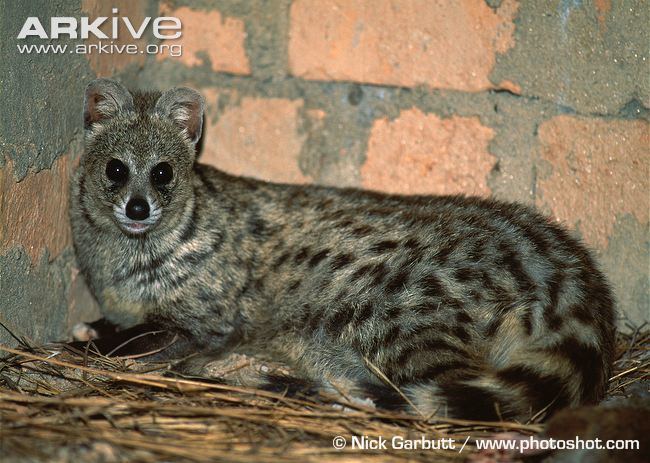
The small Indian civet is a monotypic genus.
The small indian civet viverricula indica
Taxonomy and evolution
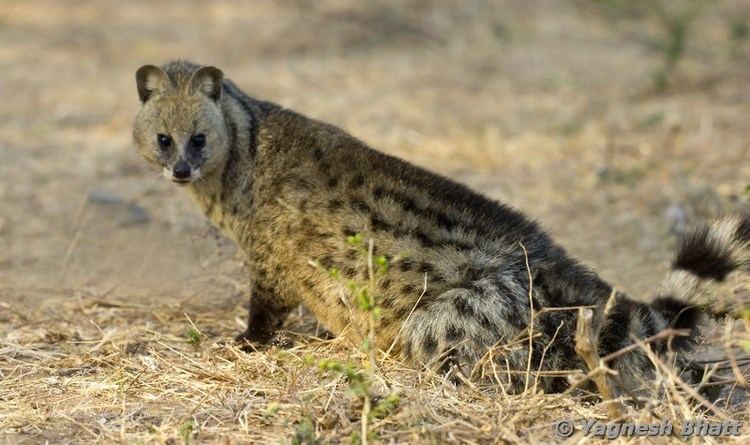
The genus Viverricula was named by the English naturalist Brian Houghton Hodgson in 1838 with the small Indian civet as the sole member. Viverricula rasse described by Horsfield from Java is considered a variety of Viverricula indica.
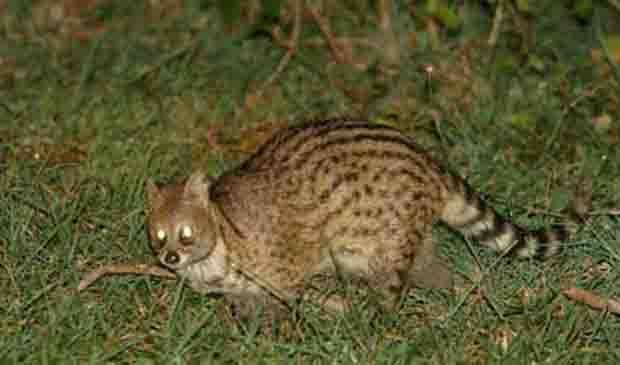
A phylogenetic study showed that the small Indian civet is closely related to the genera Civettictis and Viverra. It was estimated that the Civettictis-Viverra clade diverged from Viverricula around 16.2 Mya. The authors suggested that the subfamily Viverrinae should be bifurcated into Genettinae including Poiana and Genetta, and Viverrinae including Civettictis, Viverra and Viverricula. The following cladogram is based on this study.
Subspecies
The following nine subspecies are identified:
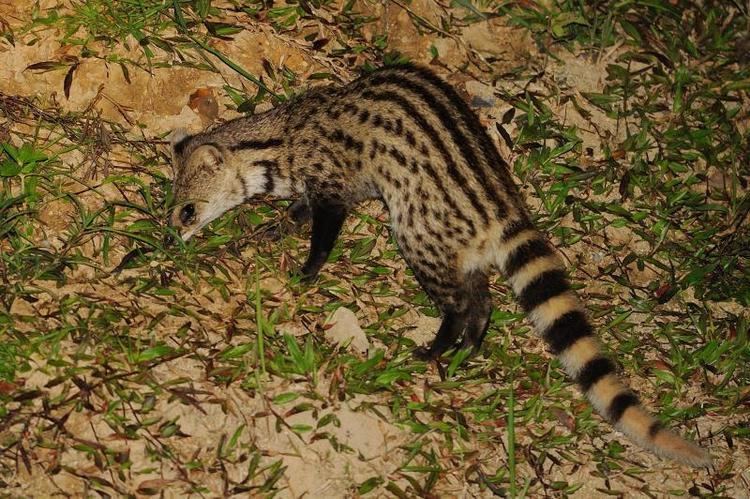
Characteristics
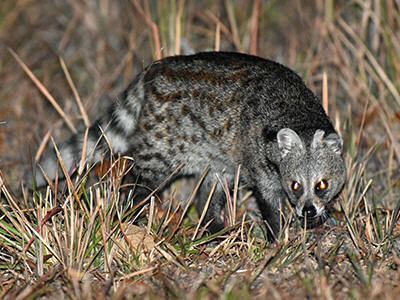
The small Indian civet is 21 to 23 in (53 to 58 cm) in head and body size and has a rather coarse fur that is brownish grey to pale yellowish brown, with usually several longitudinal black or brown bands on the back and longitudinal rows of spots on the sides. In some specimens both lines and spots are indistinct, and the dorsal bands are occasionally wanting. Usually there are five or six distinct bands on the back and four or five rows of spots on each side. The neck markings are rather variable. Generally there are two dark stripes from behind the ear to the shoulders, and often a third in front, crossing the throat. The underfur is brown or grey, often grey on the upper parts of the body and brown on the lower. The grey hairs on the upper parts are often tipped with black. The head is grey or brownish grey, the chin often brown. The ears are short and rounded with a dusky mark behind each ear, and one in front of each eye. The feet are brown or black. The tapering tail is 15 to 17 in (38 to 43 cm) long with alternating black and whitish rings, seven to nine of each colour.
Distribution and habitat
Small Indian civets are known to occur in south and central China, Hong Kong, most of India, Lao PDR, Myanmar, Thailand, Viet Nam, Cambodia and Sri Lanka. No search has been made for recent records from Nepal, Bhutan, Bangladesh, Peninsular Malaysia, Java or Bali, areas where they were historically recorded. Their current status in Singapore is unclear. They have been introduced to Madagascar.
Small Indian civets have been recorded in semi-evergreen and deciduous forest, mixed deciduous forest, bamboo forest, scrubby areas, grasslands and riverine habitat.
Ecology and behavior
Small Indian civets are nocturnal, mostly terrestrial and insectivorous. They inhabit holes in the ground, under rocks or in thick bush.
Diet
They feed on rats, mice, birds, snakes, fruit, roots and carrion. Occasionally they carry off poultry.
Reproduction
The female has usually four or five young at a birth. The life span is eight to nine years.
Threats
People of Traspur village in Assam hunt it for meat and purify its skin into medicine.
Conservation
Viverricula indica is listed on CITES Appendix III. In Myanmar, it is totally protected under the Wildlife Act of 1994.
